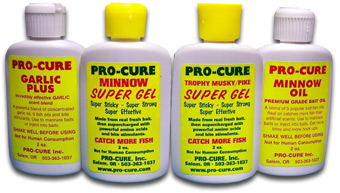Northern pike, Esox lucius, are attracted by alarm pheromone of fathead minnow, Pimephales promelas, deposited normally in
the undamaged fish skin (Mathis et al., 1995; Chivers et al., 1996; undirect
data by Wisenden & Thiel, 2001). According to Mathis et al. (1995), pike are also attracted by
an artificial hypoxanthin-3(N)-oxyde identified as an active component of the Ostariophysi
alarm pheromones.
In addition
to pike in the winter experiments (Wisenden & Thiel, 2001), other predatory fish active in cold season
such as walleye, Stizostedion vitreum, largemouth bass, Micropterus salmoides, and yellow perch, Perca flavescens, might be attracted by the skin extract of fathead
minnow, P. promelas. Other potential
predators in the experimental locality (Wisenden & Thiel, 2001) such as black bullhead catfish, Ameiurus melas, brown bullhead, A. nebulosus, and yellow bullhead, A. natalis, are inactive in the winter
season.
It is shown
directly that piscivorous (adult) largemouth bass, M. salmoides, are attracted by alarm pheromone of finescale dace, Phoxinus neogaeus (Brown et al., 2001). Likewise,
adult yellow perch, P. flavescens, are attracted by conspecific alarm pheromone (Hurvey
& Brown, 2004) while juvenile (planktivorous) bass and perch demonstrate
anti-predator behaviour to the same cue.
According
to Mathis et al. (1995), skin extract of fathead minnow, P. promelas, attracts also 6 species of predaceous diving beetles
(Dytiscidae) like Colymbetes sculptilis
and more.
Basic References
Brown G.E.,
LeBlanc V.J., Porter L.E. 2001. Ontogenetic changes in the response of
largemouth bass (Micropterus salmoides, Centrarchidae, Perciformes) to heterospecific
alarm pheromones. Ethology 107,
401-414
Chivers
D.P., Brown G.E., Smith R.J.F. 1996. The evolution of chemical alarm
signals: attracting predators benefits alarm signal senders. The American Naturalist 148, 649-659
Harvey M.C., Brown G.E. 2004. Dine or dash?: Ontogenetic shift in the response of
yellow perch to conspecific alarm cues. Environmental Biology of Fishes 70, 345-352
Mathis A.,
Chivers D.P., Smith R.J.F. 1995. Chemical alarm signals: predator
detterents or predator attractants? American
Naturalist 145, 994-1005
Wisenden B.D.,
Thiel T.A. 2001. Field verification of predator attraction to minnow
alarm substance. Journal of
Chemical Ecology 28, 417-422




